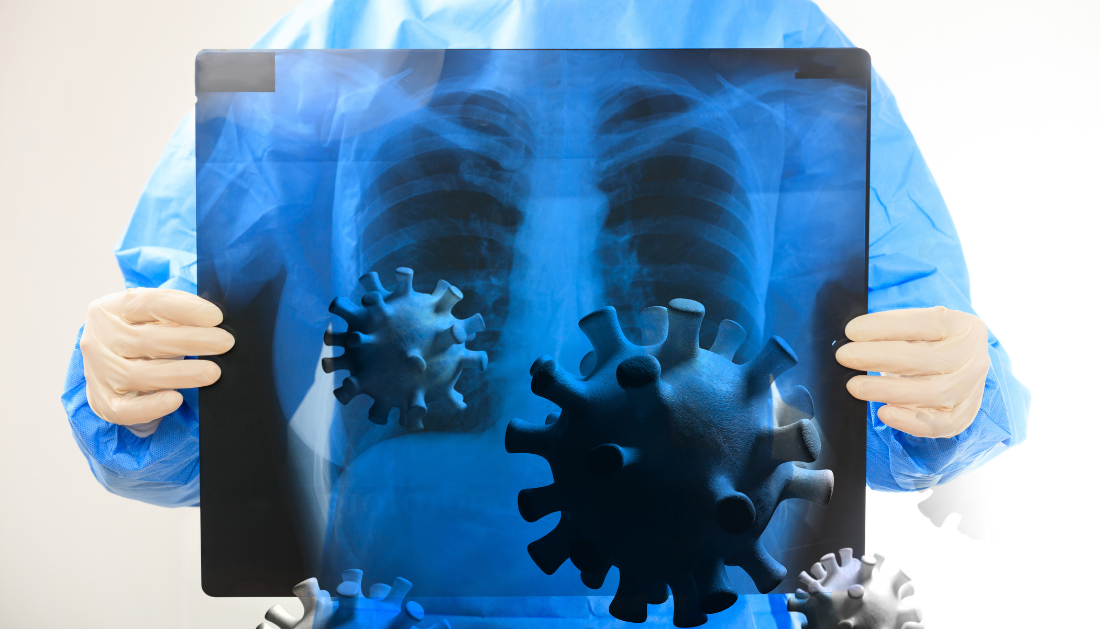

According to this research, artificial intelligence can detect COVID-19 in lung ultrasound images in the same way that facial recognition software can identify a person in a crowd.
The findings advance AI-driven medical diagnostics and bring health care workers closer to being able to quickly diagnose patients with COVID-19 and other lung disorders using algorithms that search through ultrasound pictures to detect disease.
The findings, which were just published in Communications Medicine, cap off an endeavor that began early According to this research, artificial intelligence can detect COVID-19 in lung ultrasound images in the same way that facial recognition software can identify a person in a crowd.in the epidemic, when clinicians required tools to quickly screen legions of patients in overburdened emergency rooms.
“We developed this automated detection tool to help doctors in emergency settings with high caseloads of patients who need to be diagnosed quickly and accurately, such as in the earlier stages of the pandemic,” said senior author Muyinatu Bell, the John C. Malone Associate Professor of Electrical and Computer Engineering, Biomedical Engineering, and Computer Science at Johns Hopkins University. “Potentially, we want to have wireless devices that patients can use at home to monitor the progression of COVID-19, too.”
According to co-author Tiffany Fong, an assistant professor of emergency medicine at Johns Hopkins Medicine, the technology has the potential to be used to design wearables that track conditions like congestive heart failure, which can cause fluid overflow in patients’ lungs, similar to COVID-19.
“What we are doing here with AI tools is the next big frontier for point of care,” Fong went on to say. “An ideal use case would be wearable ultrasound patches that monitor fluid buildup and let patients know when they need a medication adjustment or when they need to see a doctor.”
The AI examines ultrasound lung pictures to identify B-lines, which show bright, vertical anomalies and suggest inflammation in individuals with pulmonary problems. It mixes computer-generated images with actual ultrasounds of patients, including some who sought treatment at Johns Hopkins.
“We had to model the physics of ultrasound and acoustic wave propagation well enough in order to get believable simulated images,” Bell went on to say. “Then we had to take it a step further to train our computer models to use these simulated data to reliably interpret real scans from patients with affected lungs.”
Early in the pandemic, scientists struggled to apply artificial intelligence to identify COVID-19 signs in lung ultrasound pictures due to a dearth of patient data and a limited understanding of how the disease develops in the body, according to Bell.
Her team created software that can learn from both actual and simulated data and then detect irregularities in ultrasound scans that suggest a person has contracted COVID-19. The tool is a deep neural network, a type of artificial intelligence designed to mimic the brain’s interconnected neurons, which allow it to identify patterns, process speech, and do other complicated functions.
“We didn’t have enough ultrasound images of COVID-19 patients to develop and test our algorithms early in the pandemic, so our deep neural networks never reached peak performance,” said first author Lingyi Zhao, who developed the software while a postdoctoral fellow in Bell’s lab and now works at Novateur Research Solutions. “Now, we are proving that with computer-generated datasets, we can achieve a high degree of accuracy in evaluating and detecting these COVID-19 features.”
More information: Lingyi Zhao et al, Detection of COVID-19 features in lung ultrasound images using deep neural networks, Communications Medicine (2024). DOI: 10.1038/s43856-024-00463-5
more recommended stories
 E-Cigarette Use and Heart Attack Risk in Former Smokers
E-Cigarette Use and Heart Attack Risk in Former SmokersKey Takeaways for Clinicians and Nurses.
 36-Week Pre-eclampsia Screening May Reduce Term Risk
36-Week Pre-eclampsia Screening May Reduce Term RiskA New Preventive Strategy for Term.
 Cardiovascular Risk and Sudden Cardiac Death in Diabetes
Cardiovascular Risk and Sudden Cardiac Death in DiabetesRising Sudden Cardiac Death (SCD) Risk.
 Poor Kidney Function and Alzheimer’s Biomarkers Explained
Poor Kidney Function and Alzheimer’s Biomarkers ExplainedPoor kidney function may influence levels.
 Walking Speed Before Hip Replacement Predicts Recovery
Walking Speed Before Hip Replacement Predicts RecoveryNew Evidence Points to a Simple,.
 Neuroblastoma Drug Combo Extends Survival in Models
Neuroblastoma Drug Combo Extends Survival in ModelsA Promising Shift in High-Risk Neuroblastoma.
 How Soybean Oil Impacts Weight Gain and Metabolism
How Soybean Oil Impacts Weight Gain and MetabolismWhy Soybean Oil May Affect Metabolism.
 Coffee and Cognitive Function: Evidence Review
Coffee and Cognitive Function: Evidence ReviewA new narrative review in Cureus.
 Colorectal Cancer Screening Rates Low in Adults 45–49
Colorectal Cancer Screening Rates Low in Adults 45–49Recent UCLA research reveals that colorectal.
 Gut Immune Cells and Long-Lasting Antiviral Protection.
Gut Immune Cells and Long-Lasting Antiviral Protection.Breakthrough Findings on How Gut Immune.

Leave a Comment